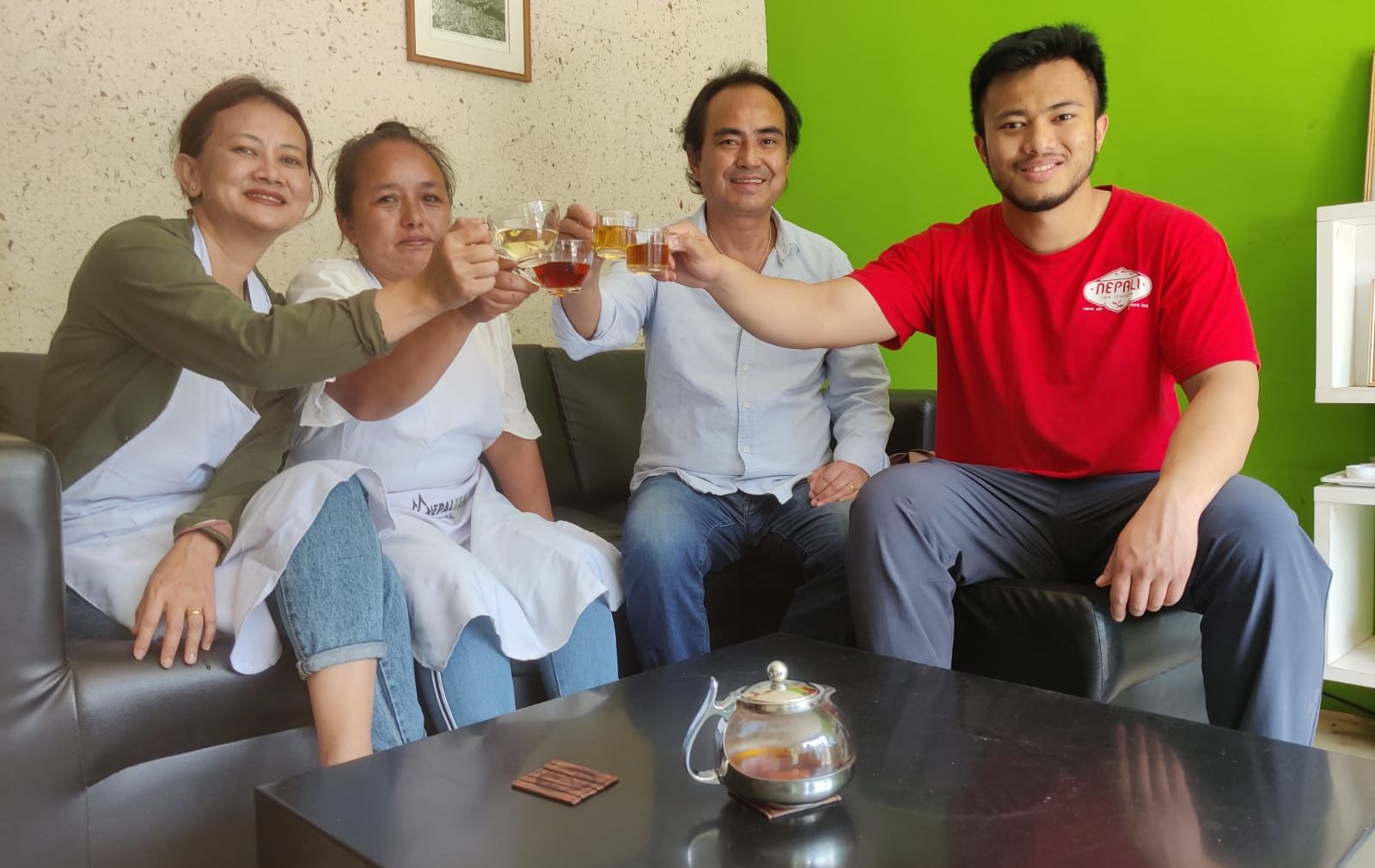
Chandra Bhushan Subba
Chandra is the managing director at Sandakphu Tea Estate and owns the Sandakphu Tea Room in Lalitpur, Nepal. In addition to overseeing these ventures, Chandra manages complex tea industry (business and development) projects with national and international stakeholders, including projects in Laos (2012-14) and Myanmar (2013-14). During the past 20 years, he has worked hand-in-hand with small tea growers, tea labor and stakeholder farmers, multinationals, government bodies, private associations, councils, federations, NGOs, and INGOs. He is known for creative, strategic planning with tight financial disciplines imposed by ambitious budgets. The projects he manages, he says, “adhere to methodical administration to deadlines (not to speak of crisis management where necessary) and the application of modern leadership methods (through staff motivation and involvement in both decision-making and target-setting, clarity in communication, and appropriate use of interpersonal skills).”
Sandakphu has produced award-winning specialty teas since 2011, including several that won awards in the North American Tea Championship in 2012-2016. Within five years, specialty tea produced from this unit penetrated some of the exclusive stores in France, Australia, the USA (Including Whole Foods), the UK, Germany, Denmark, Sweden, Lithuania, Slovakia, the Czech Republic, the Netherlands, Australia, and Russia.
In 2017, a unit of more than 50 farmers was certified organic in Nepal, conforming to the Internal Control System developed as part of the Code of Conduct adopted in 2003.
“My own cosmopolitan background and analytical interests in tea cultivation, production, and market movements, together with a solid background in technical knowledge of tea production and the art of tasting and blending, have also left me confident in developing plans and implementing them through approaches utilizing local resources and knowledge-base otherwise not easily available in a single package,” he says.
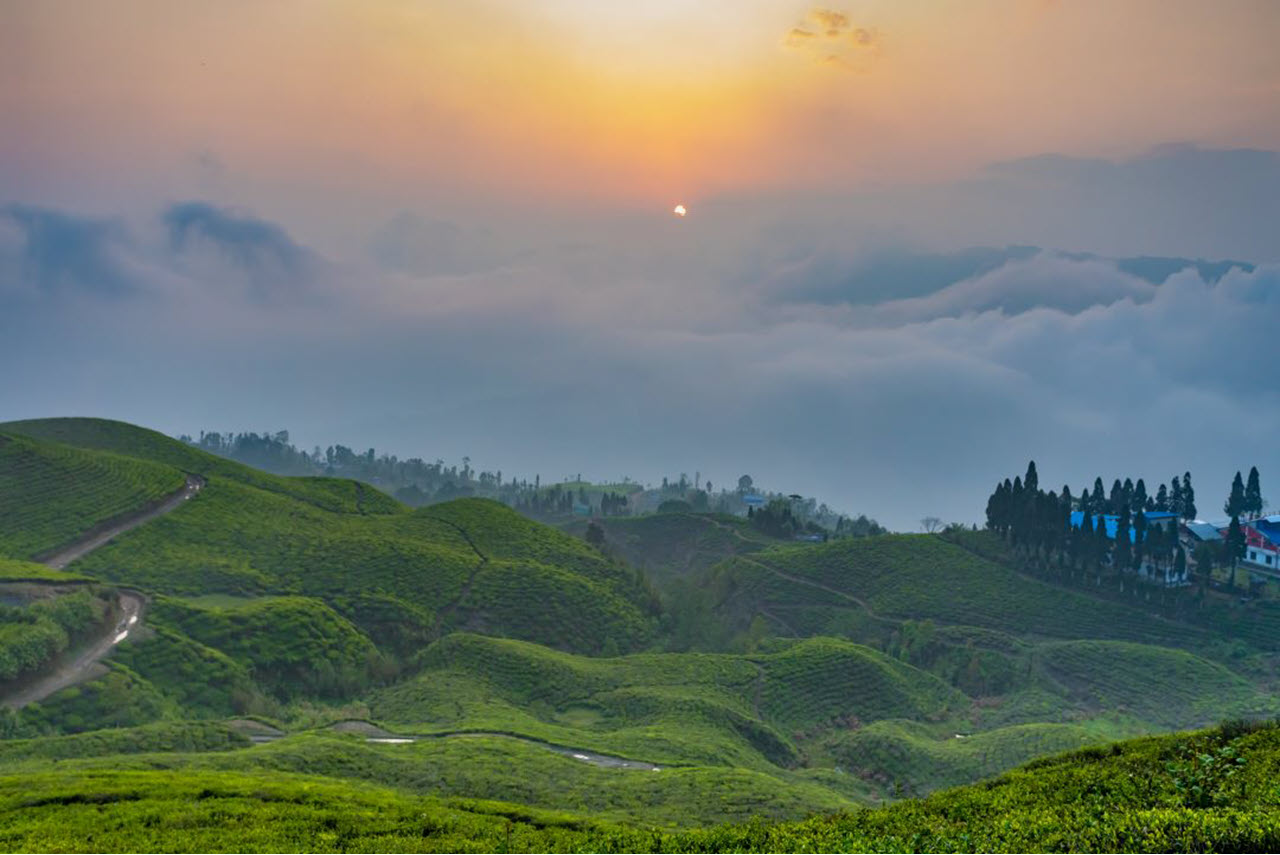
Ritu: When would you say you decided to pursue tea making/tea tasting as a professional skill? What first interested you about tasting?
Chandra: My grandfather sold tea. He was a local vendor. People would cross the country bringing teas from Darjeeling in horse bags all the way from the border. My grandfather could tell people. ‘this is good tea.’
I was born in Ilam, the tea capital of Nepal. So, my decision to embark on the path of professional tea-making and tasting was deeply rooted in my upbringing. Surrounded by the intricate dance of tea artisans and the fragrance of freshly plucked leaves, my fascination with tea began at a tender age. I’ve been living with tea for over three decades now. The stories shared by elders and how the plant encapsulated my entire world captivated me from early on. I never thought there was another option and never truly looked for one.
I tried my luck here and there long ago, 40 years ago, to be precise. But my bond with the tea plant proved so strong that I consider all of it a mere distraction. Sometimes, I forget I was a teenager once dreaming of things other than tea.
I wouldn’t call it a shift. But when I decided or rather accepted myself as part of the Nepali tea world, there was a sense of coming unto a calling. My formal education showed me all the vast possibilities within the world of tea, and it was liberating to step into my career.
The pivotal moment solidified during my studies at Assam Agricultural University in Jorhat, Northeast India, nearly four decades ago, where the famous Tocklai Tea Research Station exists even today, and all my friends are there even now. There, amidst the rich heritage of Assam’s tea industry, I was immersed in a comprehensive education encompassing the intricacies of cultivation, processing, and the cultural significance of tea. It was in those gardens and classrooms that the seeds planted in childhood flourished. My first ever true tea-tasting experience happened as a student there in 1988. I tasted Darjeeling tea, called Upper Assam Black tea—those sips I took as an amateur showed me as a tea professional.
When I enrolled, the vice chancellor of the University told us that this is the only university where you can learn about tea. That’s where and when I decided to join it—the appeal of tasting lies in its journey through the senses. I’ve drunk tea most of my life, but doing it professionally was a whole new world. Studying at AAU deepened this fascination. Hands-on tea garden experiences and a thorough education cemented my enduring love for the intricate art of tea tasting.
Ritu: Which teas were initially the most challenging to you? Are they still daunting? Or have you made peace with them and reached a mutual understanding? How so?
Chandra: Each tea, in its own way, presented a unique challenge, making it nearly impossible to pick the most daunting. Seeing how hard people worked to turn Camellia Sinensis into a brew all my life, every judgment simultaneously came too easy and too difficult. All my life, I’ve known that tea, as a crop, is intimately connected to the weather, soil, elevation, and latitude, each influencing its distinctive character. In Ilam, where the soil harmonizes with the people, this resonance translates into the exceptional quality of tea produced. Having traveled and crafted tea in various countries, I’ve witnessed this harmony manifest in diverse ways. One tea that particularly stands out is the Himalayan Gold, renowned for its popularity and distinctive traits. This tea embodies a typical yet remarkable character, boasting a natural essence reminiscent of honey, a flavor that captures the essence of its terroir. I think the question reminds me of this particular tea because a sip of this tea brings me so many memories and so much local knowledge that it felt impossible to make tea drinkers worldwide understand the depth I tasted in every sip. It felt impossible to graph in a taste chart.
There is also the fact that tea tasters, in general, have little control over the market. It doesn’t matter if I call a so-and-so tea the best tea in the world. The ultimate decider is the consumers themselves. The person who drinks the tea every time they make a cup for themselves truly decides whether the tea is good or bad. You see, as they pour their drink wherever they are, the tea maker’s job is considered complete, and the tea taster’s job is rendered a little bit futile. Consumers seek consistency, and tea tasters’ job is to help with that, but we have very little in control.
Over the years, I’ve come to consider the main part of my job as a tea maker and tea taster to recognize the profit in the sip. While the challenge to accurately translate the taste into the taster’s vocabulary is a big part of the job, it is also my responsibility to, in a sip, imagine a home for the tea. I call it tasting the profit because it is futile to sell black tea to people who are looking for white tea and vice versa.
Yet, over time, this challenge evolved from an obstacle into a treasured aspect of my journey with tea. I see each tea taste as the beginning of a conversation rather than as a final product.
Ritu: Will you share insights with readers about how you developed your tea vocabulary? What was the process like for you in going from identifying “something familiar” to perhaps relating it to a memorable experience or place to being able to put a specific term to it?
Chandra: In the beginning, I was obsessed with the technicalities of it all. I sought a connection between the taste and the regions, the variant, and the soil the plant came from. I never said no to any opportunities to learn about tasting teas, after all it is all about the experience. I still remember years zooming out from my country, crisscrossing the entire US to meet people tasting teas. Celestial Seasonings Teas in Boulder, Colo., invited me to expand my horizons as a tea taster and maker. When I arrived, they gave me a report, a tasting report. And I asked, ‘Who made it?’ They said that it was from their taster’s panel. The elaborate report was sourced solely from the consumers themselves. It contained descriptors like “burger-y,” “sauce-y,” “lemon-y,” and so on. At first, I found the report stranger than strange. But the more I sat with this very real and honest feedback, the more I learned about a tea taster’s job.
I re-evaluated everything I had learned. I believe wholeheartedly that the vocabulary of tea is only a small part of the job. It gets especially complicated with language in itself. For example, an Indian curry is considered spicy in India. If you go to Japan, the same curry is considered soothing and modified to suit the palate of Japanese people or the market. We call it metallic and aromatic, but none of these terms were in the taster’s panel report. I think it is the individual’s perception of quality. It does not matter what we call very flowery or give the name whatever we like; at the end of the day, the person drinking the tea will tell you about it; not everyone can know or understand that vocabulary. So, for me, vocabulary is not important. What is important is the taste perception.
Over the years, there are two things you taste. One is the quality. Another one is the profit. Whenever I set out to taste a tea, I try not to focus too much on the exact term but predict different ways the taste of the tea can be interpreted. One noisy sip of the tea (it’s not an attractive sound, but that’s normally what happens in tea tasting), and in one sip, you determine the character of the tea. Instead of focusing too much on the words, I gauge the quality of the tea maker. And since I am a seller of tea as well, I look for profit too. At the end of the day, you have to sell it. Who is going to buy this, and what price are you going to get for it? Every sip takes me to different types of tea drinkers around the world, and I try to match them to the cup I am holding in front of me. It makes for a remarkable job.
Artisanal and organic teas are handmade.
Ritu: What advice would you give consumers seeking to refine their taste in tea?
Chandra: My advice is to start slow. Refining your taste in tea can be an enriching journey. To start, categorize the types of tea—explore the vast spectrum from robust black teas to delicate green teas, soothing herbal blends, and nuanced oolongs. Begin by sampling different varieties, taking it one step at a time. Allow your palate to familiarize itself with the diverse flavors, aromas, and textures that each category offers.
Starting slowly is key. Dive into one type of tea at a time, gradually expanding your repertoire. Notice the subtleties in taste—whether you lean towards the boldness of a black tea or the gentle notes of a white tea. Pay attention to how each tea resonates with your body and emotions. Tea can be therapeutic, so matching its qualities to your needs and how it makes you feel is crucial. Whether it’s providing a calming effect, a revitalizing boost, or simply an enjoyable moment, let your tea choices reflect what suits you best. Experimenting and exploring different teas at your own pace will allow you to refine your taste and discover the blends that truly resonate with you.
Tasting Notes
Himalayan Golden Black Tea
After a short summer season in Nepal, the Himalayan monsoon approaches the foothills with a magnanimous rush. The golden-red soil of Sandakphu drinks in this moisture, producing a rare artisan tea that reflects all of nature’s goodness.
Origin: Jasbirey, Ilam, Nepal
Altitude: 7,500 feet
Tea Maker: Chandra Bhushan Subba
Cultivar: T1/T383/B668
Pluck: One or two small leaves + bud
Dry leaves: 95% oxidized
Wet leaves: Medium brown, twisted
Process: After plucking, the leaves are 25% withered and then rolled in mechanical rollers. The tea is then placed in a shaping machine and dried, producing uniformly curled leaves, resulting in beautiful Himalayan Golden Tea.
Liquor: Deep amber with a hint of red-orange. The liquor offers notes of malt, clover honey, and burnt sugar, highlighted by aromatic notes of apricot and clove. It is a great breakfast tea that can be enjoyed with or without milk and sugar.
Aroma: Clover Honey, Malt, Clove (wet)
Brew: Western Style Use one teaspoon per 8 ounces of 195°F water. Steep for 3-4 minutes. Tea can be steeped more than once. More details at NepaliTeaTraders.com
Cup: Himalayan Golden is a striking, award-winning black tea picked during the monsoon season in Sandakphu, Nepal. Its rich, deep amber liquor has notes of malt, clover honey, and burnt sugar, highlighted by aromatic notes of apricot and clove. It is a great breakfast tea that can be enjoyed with or without milk and sugar.
Awards: Best black tea by the North American Tea Championship.
Purchase link: Nepali Tea Traders
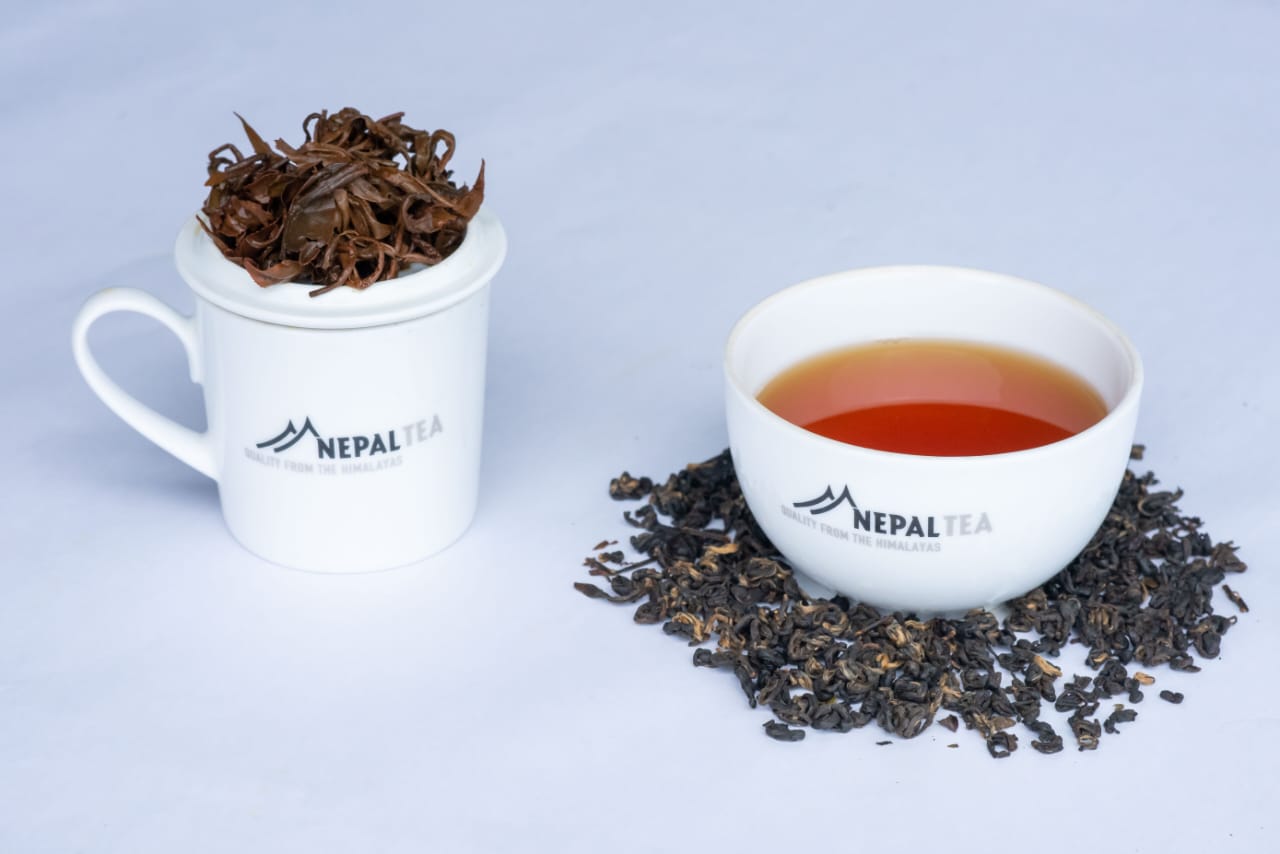
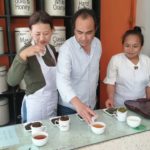
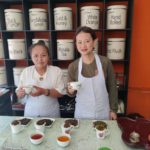
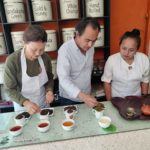
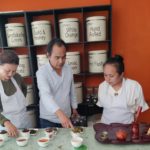
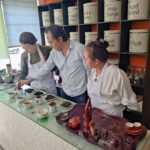
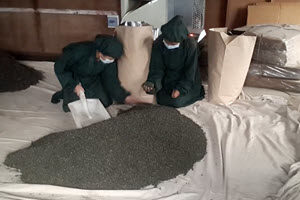
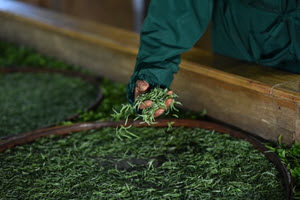
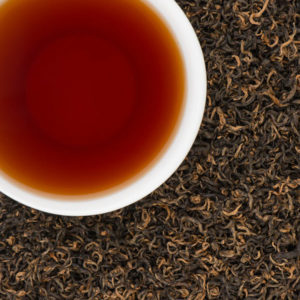
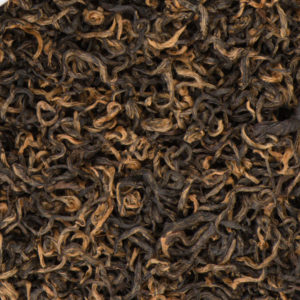
Great read! From a 79 year old retired Tea Planter who had spent 52 years of my life in Tea in India, Viet Năm, Malawi & Tanzania, many many congratulation to Chandra Subba, real inspirational stuff.
Ritu, much appreciation on your ability to draw out nuggets of wisdom from Chandra, very well done.